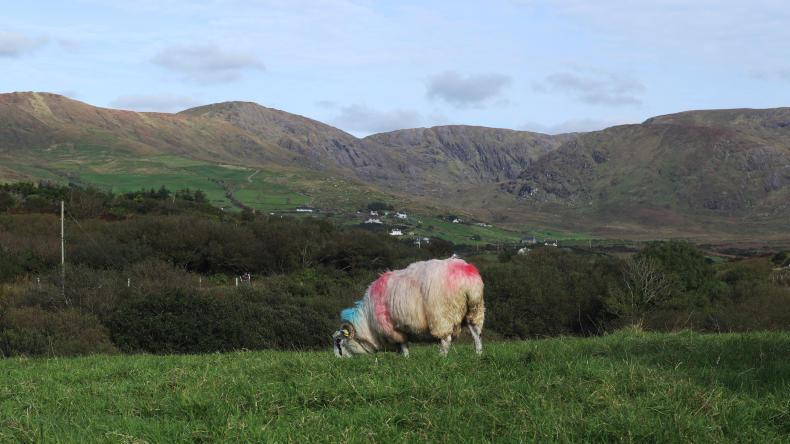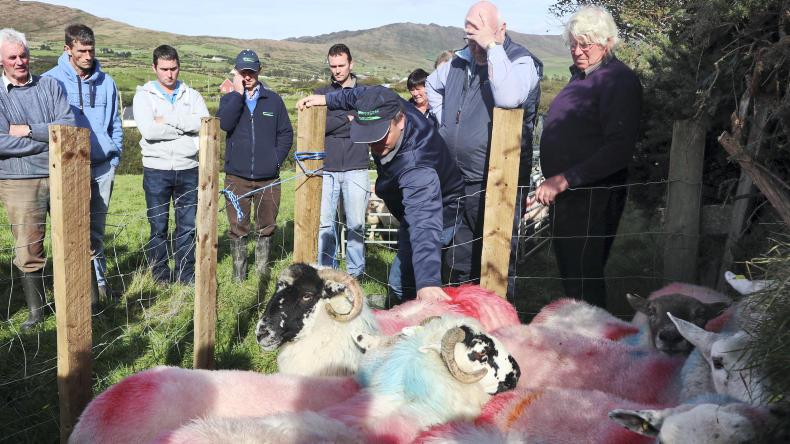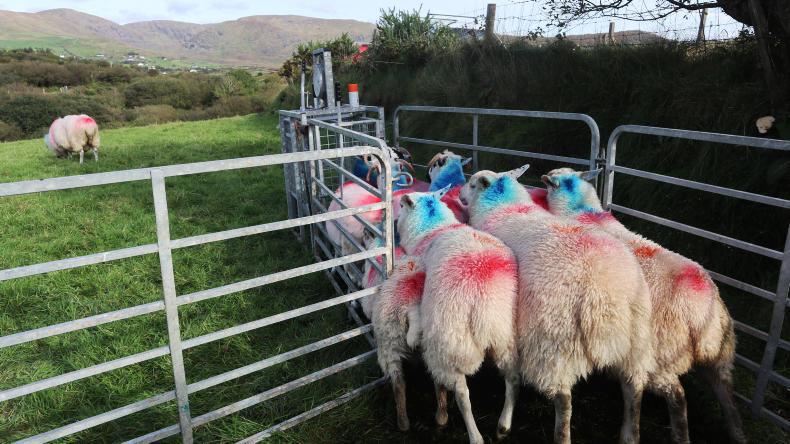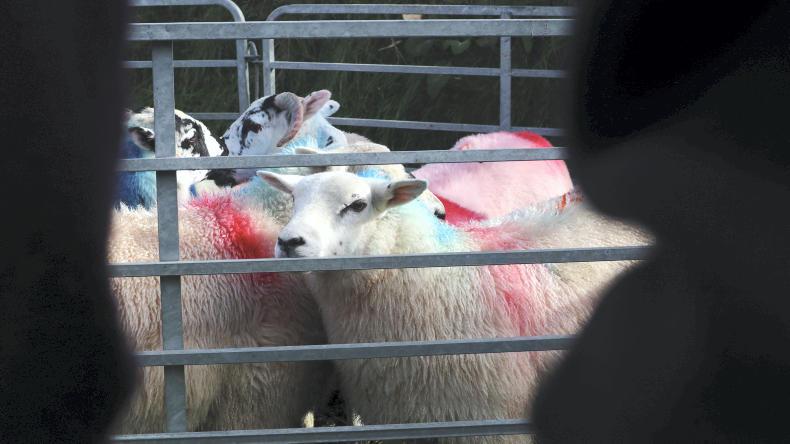According to Michael Connolly of Teagasc, “there might be a lot of mountain land around but they can grow grass around Castletownbere too”. Based in Skibbereen, the environmental and technology adviser is familiar with the environs and challenges of farming in west Cork. He was speaking at the Teagasc Cork West sheep farm walk on the farm of John F and Breda O’Sullivan at Crumpane, Eyeries, Beara, Co Cork.
According to Michael Connolly of Teagasc, “there might be a lot of mountain land around but they can grow grass around Castletownbere too”. Based in Skibbereen, the environmental and technology adviser is familiar with the environs and challenges of farming in west Cork.
He was speaking at the Teagasc Cork West sheep farm walk on the farm of John F and Breda O’Sullivan at Crumpane, Eyeries, Beara, Co Cork.
The busy event saw a lot of topics covered including water quality, pesticide use and upland management through to sheep breeding and marketing.
Grass
At this time of year, farmers need to look at the grass reserves they have on the farm and plan ahead. Connolly reminded those present that grass is economically the cheapest feed.
“With a lot of heavy rain in the area recently and more forecast, grass is likely to be lost and the feeding value of it lowers. Also, with days shortening, grass growth will be restricted once the temperatures drop.

A ewe grazing on the farm of John F O'Sullivan, Crumpane, Eyeries, Beara, Co Cork.
While it is tempting to go into fields in late November and December with sheep as they won’t do much damage, they are harming your grass reserves and nothing changes the fact that spring grass is worth a lot more than autumn grass.”
Referring to the autumn grazing planner, he added: “A good guideline would be to have 20% of your green area closed up by late October, 60% by late November and 80% by the middle of December.”
Eligible land
In marginal areas, cross compliance and eligible land for payments can create some management challenges for farmers.
The presence of a high percentage of marginal ground in the area, coupled with many farmers having off-farm work, means time to manage the land isn’t as available as it may have been in times past. This throws up its own issues.
Regardless of this, Connolly urged farmers to follow best practice guidelines when dealing with sprays and sheep dip.
A very low level of MCPA in drinking water causes a problem
With a pearl mussel catchment at nearby Ardgroom, he cautioned farmers on their use of MCPA for the control of rushes and urged them to follow best practice when spraying rushes.
“A very low level of MCPA in drinking water causes a problem,” he said. “The tolerance levels for pesticides is 0.1ug/L or 0.1 of a part per billion, which is a microscopic amount. It’s like one baked bean in 21m cans of beans.”
He also gave the example that a single foil from the seal of the top of the container of MCPA contains enough pesticide to contaminate a one metre-wide stream for up to 30km.
MCPA contamination of water has occurred in a number of water supplies in the southwest of the country already in 2019, so Connolly urged more care when handling chemicals.
The farm
Farming in the middle of the Beara peninsula on a mixture of lowland and mountain grazing, John O’Sullivan runs a sheep only system.
His flock of 120 ewes is evenly split into a hill flock of 60 Scotch ewes and a lowland flock with 60 Texel ewes.
If we don’t take them off the mountain they get raggedy and bare
Detailing his use of the hill land, John said: “The lowland ewes get a small spell on the mountain, two or maybe three months after weaning. If we don’t take them off the mountain they get raggedy and bare.
"They don’t do very well on the mountain. The Scotch are kept on the green ground with their lambs and they winter out on the mountain. They go back up after shearing.”
Keeping the land eligible Michael Gottstein, head of the sheep knowledge transfer programme for Teagasc, observed that the hills that are getting overgrown are those where the sheep are only going up for a couple of months in the summer.

Michael Gottstein, head of the Teagasc sheep knowledge transfer programme, demonstrating how to handle ewes to check their body condition score.
Farmers need to put sheep up there in late spring into early summer when there is more palatable feed present in order to keep land eligible. Highlighting the host farmer, he said: “By having a hill and a lowland flock, John is able to manage his ground better.”
For breeding, John runs a Scotch ram with his Scotch ewes and a Texel ram with the Texel ewes.Commenting on the optimum ram-to-ewe ratio, Michael said one ram to 45 ewes is a safe bet. He told farmers that precautions need to be taken to reduce the risks of an infertile or sub-fertile ram.

A selection of lambs for weighing at the Teagasc sheep farm walk hosted by John F O'Sullivan, Eyeries, Co Cork.
Raddling helps to identify issues while switching rams between groups will help to lessen the impact.
Michael said that the bulletproof method of negating the effect of infertile or sub-fertile rams was to run three rams together.
Acknowledging that having three rams was a luxury, his reasoning was: “If you only have one and he is infertile, you are in trouble.
"If you have two and one is infertile, he may act as a blocker ram. If you have three, a blocker ram can’t block two rams from mating a ewe.”

A selection of lambs for weighing at the Teagasc sheep farm walk hosted by John F O'Sullivan, Eyeries, Co Cork.
The importance of assessing and monitoring the body condition score of ewes was underlined.
The biggest driver of profitability in a flock is the number of lambs available for sale.
The Scottish Blackface ewe is the most receptive of all breeds
A key driver of litter size is having ewes in optimum body condition at joining with rams.
The Scottish Blackface ewe is the most receptive of all breeds and therefore significant gains can be achieved by addressing ewe condition.
This will also deliver benefits in increasing conception rates and reducing barrenness while it will also tighten the spread in lambing.
Michael’s advice is to assess ewes as soon as possible with ewes falling below target body condition segregated for preferential treatment.
Ewes should be rechecked in the run up to mating and switched between groups, as required.





SHARING OPTIONS: